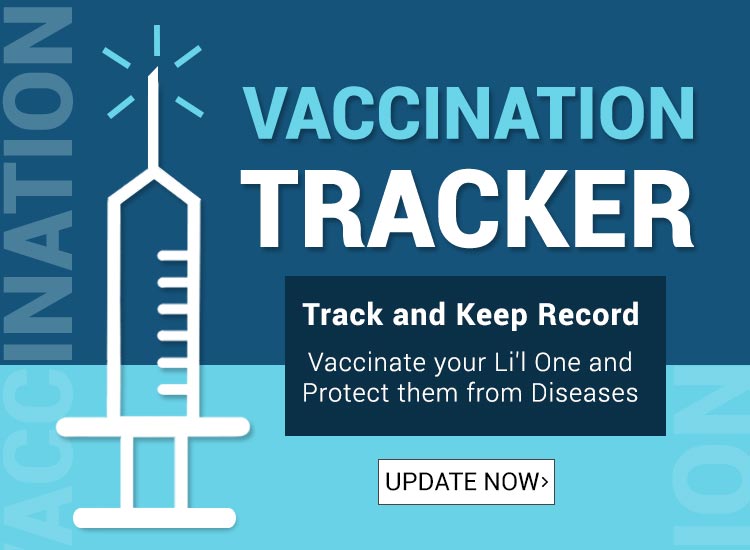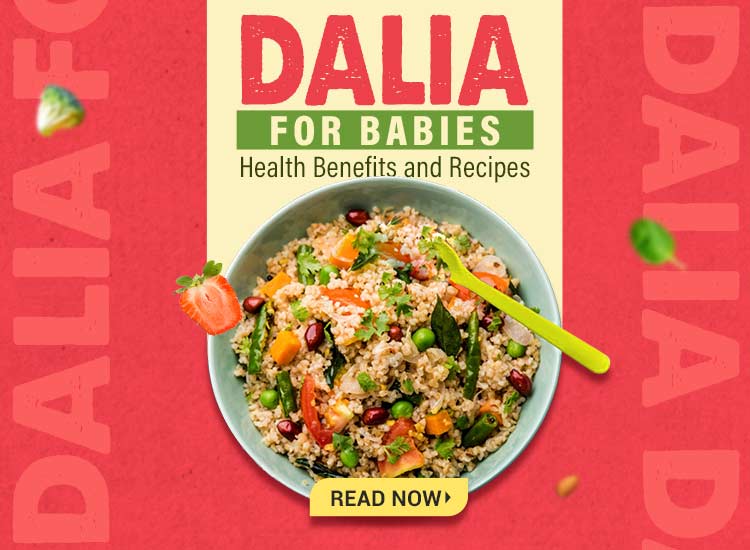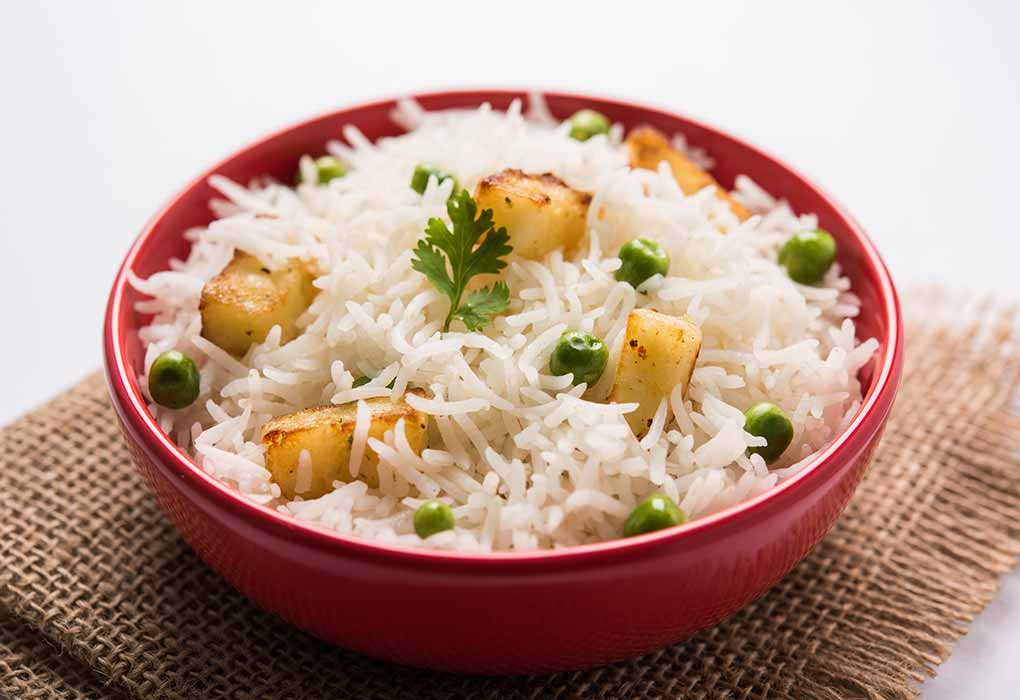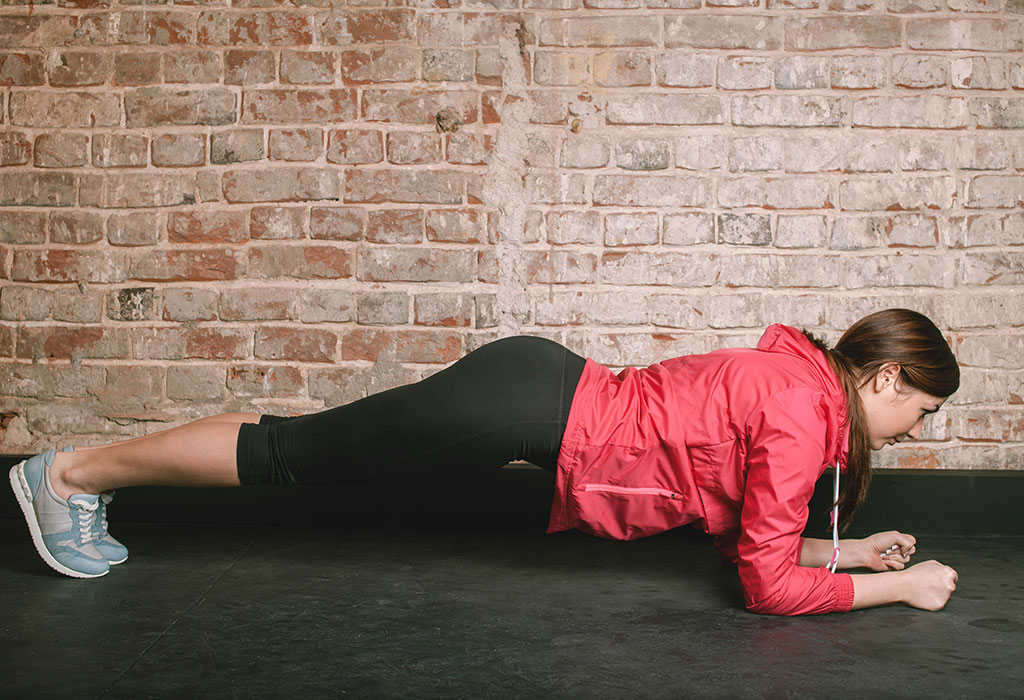Videos you might be interested in
Videos you might be interested in
Videos you might be interested in
Suggested for you
Third Trimester Diet – What to Eat & What to Avoid
Congratulations on reaching the third trimester of your pregnancy! This is an exciting milestone as you near the end of your journey and prepare to welcome your little one into the world. While you may be tempted to indulge in your favorite foods to celebrate, it’s important to prioritize a healthy third trimester diet for both your and your baby’s well-being. Nutritious foods will support proper growth and development, setting the stage for a healthy delivery and a strong start for your baby’s life ahead. Remember to listen to your body’s needs and consult with your healthcare provider for personalized guidance. Enjoy this special time and take care of yourself!
Nutritional Needs During Third Trimester
During the third trimester of pregnancy, your nutritional needs play a crucial role in supporting the growth and development of your baby while also maintaining your own health. As you enter this final stage of pregnancy, it’s essential to focus on a well-balanced diet that provides essential nutrients for both you and your baby. Here are some key nutritional needs to consider during the third trimester:
Increased calorie intake to support the growing needs of your baby and your own energy requirements.
Adequate protein intake for fetal growth and development, as well as to support the changes happening in your body.
Sufficient intake of calcium and vitamin D to promote strong bones and teeth development in your baby.
Iron-rich foods to prevent anemia and support the production of red blood cells.
Omega-3 fatty acids for brain and vision development in the baby, found in sources like fish, flaxseeds, and walnuts.
Plenty of fruits and vegetables to provide essential vitamins, minerals, and fiber for overall health and digestion.
Hydration is key, so ensure you’re drinking enough water throughout the day to stay properly hydrated.
Avoiding excessive caffeine and limiting intake of high-mercury fish to minimize potential risks to the baby’s health.
Foods to Eat During Your Third Trimester
The growth and development of your baby will depend on what you eat, and that’s the reason why the 7 to 9 months pregnancy diet is crucial. You will now need about 200 additional calories every day, and an adequate quantity of vitamins, fibre and minerals. Here are the foods for third trimester that you should include in your pregnancy diet (1).
1. Foods Rich in Iron
According to the Cleveland Clinic, a diet that lacks iron could lead to anaemia during pregnancy, which can make you dizzy and tired (2). It may also cause bleeding during delivery. Hence, eating iron-rich foods is necessary. In your last trimester pregnancy diet, you can include meat, dairy products, eggs, wheat bran and beans.
2. Foods Rich in Protein
This is a very important part in your diet for pregnancy third trimester. Your body will need about 70 grams of protein during this stage since it helps in the formation of the baby’s body. Eating protein-rich foods will ensure that your blood glucose levels remain constant and the risk of diabetes is minimised. You can eat foods like tofu, legumes, fish, and meat.
3. Foods Rich in DHA
Having DHA-rich foods during pregnancy can help develop the baby’s brain. You will need about 200 milligrams of DHA (docosahexaenoic acid) daily and to meet these requirements you can include milk, eggs, and fruits in your meals.
4. Foods Rich in Folic Acid
Folic acid is found in green leafy vegetables like spinach and romaine lettuce – you can include these in your third-trimester diet. Consuming folic-acid-rich foods will ensure proper foetal growth and lower the risk of low birth weight for your baby. Apart from eating spinach and lettuce, you can even include folic acid, beans, and citrus fruits.
5. Foods Rich in Calcium
In the third trimester of your pregnancy, your baby’s bones should get stronger and for that, your pregnancy diet should include about 800 mg of calcium. To meet your calcium requirements, you can add and milk products like cheese, tofu, and yoghurt to your diet. Salmon and nuts are also good sources of calcium. However, if you plan to eat salmon, first, check with your doctor if you can eat it or not. If she gives the go-ahead, make sure you cook it well before eating.
6. Foods Rich in Magnesium
Your body will need magnesium as it helps absorb calcium and repairs damaged body tissues, so you must include magnesium-rich foods in your diet. For 350 to 400 mg of magnesium, you can include almonds, pumpkin seeds, barley, oats, beans and artichokes to your diet. Eating these foods will also provide relief from muscle cramps and lower the risk of preterm labour.
7. Foods Rich in Vitamin C, B6 and B12
These vitamins play a significant role in the development of a baby through the musculature and placental growth. These vitamins can be found in oranges, bananas, sweet lime, carrots, chickpeas, and almonds.
8. Fruits and Vegetables
Eating fruits and vegetables is also important during pregnancy as they can provide you with various nutrients. Fibre-rich fruits and veggies can provide relief from constipation and regulate digestion (3). You can have them in the form of juices, smoothies or raw, fresh, frozen or canned.
9. Nuts
Nuts are a good source of protein, thiamine, and essential omega-3 fatty acids. If you do not feel up for lunch or dinner, grab a handful of almonds, walnuts, or pistachios and enjoy.
And if you are looking for foods to increase weight in the third trimester, you should eat more frequently and include foods that are nutrient and calorie-dense like dry fruits, nuts, and crackers with peanut butter.
A Sample Diet Plan for the Third Trimester of Pregnancy
Having a well-balanced diet is the key to your diet during the third trimester. Foods rich in vitamins, iron, and other nutrients are essential in the third trimester. Here is a sample meal plan for the third trimester that you can refer to. Note: This is a sample pregnancy diet chart for third trimester, so before following it consult with your doctor and make the necessary changes.
BREAKFAST
SNACK
LUNCH
SNACK
DINNER
Monday
Oats porridge with honey Apple juice
Sapodilla
Potato and onion paratha with curd, coriander and mint chutney
Mango panna and sprouted green gram chaat
Soya and mushroom curry and okra sabzi with cucumber and carrot salad + chapati/rice
Tuesday
Grilled paneer sandwich and Tea
Guava
Kidney beans curry + capsicum and cauliflower sabzi and cucumber raita + rice
Almond milk
Red lentil dal + beans sabzi + chapati/rice
Wednesday
Wheat porridge with dates and milk
Grapes
Potato and peas curry + pumpkin sabzi + chapati
Buttermilk with dhokla
Spinach paratha + beetroot raita
Thursday
Sago upma with peanuts + coffee
Dried figs
Vegetable khichdi + pomegranate raita + roasted papad
Coconut water + roasted corn
Bottlegourd kofta curry + crispy lotus stem sabzi with Pearl millet roti
Friday
Semolina and mixed vegetable chila + buttermilk
Mango
Black gram dal + round gourd sabzi and Chickpea flour + chapati
Lassi + puffed rice with roasted peanuts
Pulao with onion and tomato raita
Saturday
Methi paratha with curd
Papaya
Mung bean dal and carrot and peas with chapati/rice
Jal jeera + sweet potato chaat
Black-eyed peas curry + radish sabzi with roti
Sunday
Wholewheat toast with sautéed mushroom + banana milkshake
Pomegranate
Chickpeas curry + bitter gourd sabzi with chapati/rice
Lemonade with + mixed nuts and raisins
Pasta in tomato sauce + steamed broccoli sticks
Useful Dietary Tips for the Third Trimester
According to the National Health Service, here are some dietary tips that you should follow in the 3rd trimester of pregnancy diet (4).
Do not miss any meals and have small meals.
Make sure your daily diet includes all food groups required.
Cut out sugar and salt-laden foods or snacks from your diet.
Reduce the consumption of caffeinated beverages.
Quit smoking
Avoid eating fried and spicy foods as they can lead to heartburn and indigestion.
Incorporate prenatal vitamins into your daily routine to ensure you’re meeting all your nutritional needs, especially if you’re unable to get enough nutrients from food alone.
Practice portion control to prevent excessive weight gain and discomfort, aiming for balanced meals and snacks throughout the day.
What to Avoid in the Third Trimester of Pregnancy?
Avoid including these foods in your third-trimester pregnancy diet.
Salt: Avoid eating salty foods such as potato chips and fries.
Raw Vegetables: Raw veggies or uncooked veggies can lead to a gas problem, hence you must avoid eating raw veggies. Before eating any veggie, make sure you cook it well.
Spicy Foods: Spicy foods can cause indigestion and heartburn during pregnancy, hence they are best avoided in the last trimester.
FAQs
1. What foods should I avoid during the third trimester?
While it’s important to focus on nutritious foods, there are some items to steer clear of during the third trimester. When it comes to diet plan for pregnancy third trimester, avoid raw or undercooked meats, eggs, and seafood to reduce the risk of foodborne illnesses. High-mercury fish like shark, swordfish, and king mackerel should also be avoided to minimize potential risks to fetal development. Stay away from unpasteurized dairy products and soft cheeses like feta and brie to reduce the risk of foodborne infections. Deli meats and unpasteurized pâtés should also be avoided due to the potential presence of harmful bacteria.
2. How can I manage heartburn and indigestion during the third trimester?
Heartburn and indigestion are common discomforts during the third trimester. To manage these symptoms, avoid fried and spicy foods that can trigger acid reflux. Instead, opt for smaller, more frequent meals throughout the day to prevent stomach distension. Choose low-fat and easily digestible foods like lean proteins and whole grains. Additionally, avoid lying down immediately after eating and remain upright for at least an hour to aid digestion and reduce the likelihood of heartburn.
3. Are there any specific dietary considerations for managing gestational diabetes in the third trimester?
For those managing gestational diabetes, dietary management is crucial during the third trimester. Monitor carbohydrate intake and focus on complex carbohydrates like whole grains and legumes to help stabilize blood sugar levels. Include lean proteins and healthy fats in your meals to promote satiety and prevent spikes in blood glucose. Avoid sugary snacks and beverages, opting instead for fruits and vegetables as snacks. It’s important to follow a meal plan provided by a healthcare provider or registered dietitian to ensure balanced nutrition while effectively managing blood glucose levels.
This was all about diet for pregnant women in third trimester. If healthy food has always been your mantra, pregnant or not, you won’t need to make any significant changes. But if not, then make some dietary changes in the third trimester as well. You have done so well so far, so continue with that and your baby will grow properly! However, do check with your doctor before including anything in your diet and have a safe pregnancy!
References/Resources:
1. Pregnancy and diet; Better Health Channel; https://www.betterhealth.vic.gov.au/health/healthyliving/pregnancy-and-diet
2. Nutrition During Pregnancy: Foods To Include and Foods To Avoid; Cleveland Clinic; https://health.clevelandclinic.org/pregnancy-diet/
3. Chambial. S, Dwivedi. S, Shukla. K, John. P, Sharma. P; Vitamin C in Disease Prevention and Cure: An Overview (Indian Journal of Clinical Biochemistry); National Library of Medicine; https://www.ncbi.nlm.nih.gov/pmc/articles/PMC3783921/; October 2013
4. Have a healthy diet in pregnancy; NHS; https://www.nhs.uk/pregnancy/keeping-well/have-a-healthy-diet/
5. Thiamin; Oregon State University; https://lpi.oregonstate.edu/mic/vitamins/thiamin
6. Healthy Weight during Pregnancy; EatRight.org; https://www.eatright.org/health/pregnancy/prenatal-nutrition/healthy-weight-during-pregnancy
7. FAQs: Nutrition During Pregnancy; American College of Obstetricians and Gynecologists; https://www.acog.org/womens-health/faqs/nutrition-during-pregnancy
8. Foods to avoid in pregnancy; NHS; https://www.nhs.uk/pregnancy/keeping-well/foods-to-avoid/
Also Read:
First Trimester Diet
Second Trimester Diet
2nd Month of Pregnancy Diet
Read more
Suggested for you
When and How Do Babies Recognise Their Name
Out of the many first things that expectant parents may do is pick a name for their baby. After the baby’s arrival, they may be calling the baby by his name constantly hoping for some response. It is natural for excited parents to eagerly await the moment when their baby starts to know his name and respond to it.
However, it may be a few months before a baby can begin recognising his name. Name recognition normally happens when babies turn 6 to 7 months old. But regularly repeating your baby’s name may not just be delightful for you but can also help him get familiar to its sound.
At What Age Do Babies Recognise Their Name?
New moms may be keen to learn when do babies know their name. You may notice your baby turning towards you when you say his name as early as a couple of weeks old. But this response of your baby may not be due to name recognition but because of familiarity to the sound of your voice.
Research indicates that babies tend to start knowing their name between 6 to 7 months of age. A 6 months old baby may develop the ability to correlate familiar sounds with people or objects they denote. For example, if you indicate to a ball while saying the word ‘ball’ your baby may realise the connection though he won’t be able to say the word until he is 10 to 12 months old or beyond.
However, parents need to understand here that development in babies occurs in a continuum. Every baby can have varying time frames to cover the various developmental milestones. It is perfectly normal if some babies exhibit name recognition a little earlier than others or if some display it a little later. Parents may like to focus more on frequently using the baby’s name while talking to him so that he may eventually make the association between himself and his name when being called.
How Do Babies Start Recognising Their Name?
Studies show that words often repeated and said with emphasis can help in initiating language comprehension babies. Words usually articulated to a baby in affectionate tones like mommy or baby’s name constantly can foster recognition and response in babies.
Babies are accustomed to listening to their mothers since the time they were in the womb. Therefore, your baby may not only be familiar with your voice but can also comprehend the tone of your voice and thereby realise the different emotions like love, happiness, anger, anxiety, sadness. The emotional connection which gets established between a mother and her baby when he is still in the womb, as part of his neurological growth, assists the baby to evolve his verbal language communication skills later on.
How to Teach Your Baby to Respond to His Name
Some easy tips to help you teach your baby to respond to his name can be:
It is better to start using your baby’s name to call him right from his early months.
Avoid referring to your baby by pet-names.
Talk as much as you can with your baby daily and use his name repeatedly, which may facilitate familiarisation and relationship between the sound and his name.
Ask other family members and people to use the baby’s name while talking to him.
For better name recognition, keep the calling session short and crisp and take small breaks between different occurrences of name-calls.
Initially practise calling out your baby’s name to him in a setting with minimalistic distractions.
In due course introduce a setting with distractions and other people and consistently keep calling his name until he turns to look your way.
You may like to share a reward with your baby after a successful response as part of positive reinforcement.
Parents need not pointlessly worry and hurry their child unnecessarily in case they feel their baby is delaying responding to his name. Just enjoy the frequent cute chat sessions with your baby during this thrilling phase, letting him indulge you with his own adorable babbles and, eventually, he may reward you with suitable responses. Nevertheless, in case your baby doesn’t seem to respond to his name even by the time he is of 9 months, it is advisable to refer to a doctor.
Also Read: When Do Infants Recognize Their Parents & Other Familiar People?
Read more
Check out this new Memory

Safiya Begum
Mom of a 1 yr 9 m old girl
47 mins ago
#wonderbaby

1 Likes
0 Comment
Check out this new Memory

Safiya Begum
Mom of a 1 yr 9 m old girl
46 mins ago
#snapofthday

1 Likes
0 Comment
Suggested for you
Coronavirus Vaccine for Kids – FAQs That Parents Need to Know
Since the early days of the COVID-19 pandemic, almost every parent has been taking some comfort from the fact that COVID-19 is much less likely to seriously affect children than adults. But some kids do become very ill after contracting the Coronavirus, and the symptoms that can continue for months after even a light bout of COVID-19 are enough for many paediatricians to urge parents and guardians to get their children vaccinated as quickly as possible.
Video: COVID-19 Vaccine for Children – What Parents Need to Know
Countries like the United States have forged ahead with the vaccinations for children above 12 years of age, and others are hoping to follow suit once the clinical trials end and when the vaccines are rolled out.
Let’s now take a look at where the evidence stands on COVID vaccines for children in India.
Can Children Get the COVID-19 Vaccine?
Vaccinations for kids haven’t begun in India, as vaccine trials are currently underway. It is expected that the vaccines for children would be available from the first quarter of 2022.
Why Is It Important to Give the COVID-19 Vaccine to Children?
Children rarely develop severe forms of COVID-19 infection, and deaths from the disease are even rarer. But there are chances of developing a sometimes deadly condition known as Multi-System Inflammatory Syndrome in Children (MIS-C) in those kids who have experienced even mild symptoms of COVID-19.
Children, particularly the younger ones, probably aren’t super-spreaders of COVID-19. But the emergence of deadly and faster-spreading variants means that kids and teenagers might soon be contributing more to the spread of the Coronavirus. Hence, it’s important to get children vaccinated too, as soon as the vaccines are available for them.
What COVID-19 Vaccines Have Been Permitted for Kids Till Now & in Which Countries?
The US began inoculating young adolescents (12-15 years) in mid-May this year.
On 31st May 2021, Italy approved the use of the Pfizer-BioNTech vaccine for 12-15-year-olds.
Germany will soon begin offering COVID-19 vaccinations for all kids and teenagers aged 12 and above.
Italy has begun vaccinations for kids from 12 to 18 years of age from early June this year.
France began offering COVID-19 vaccinations to all kids over 12 years of age on 15th June 2021, and till date, more than 2 million children have received the first shot.
In Switzerland, the vaccine is currently being recommended for all kids aged 12 years and above.
Israel has approved COVID-19 Vaccines for children from 5-11 years of age who are at risk.
On 28th May 2021, Japan approved the Pfizer vaccine for children aged 12 years and above.
Are the Available COVID-19 Vaccines for Kids Safe?
Yes, the available COVID-19 vaccines for children are safe. Safety is always the main concern in clinical trials and is completely taken care of. All vaccines are only approved after successful trials and testing.
When Can Kids in India Get the COVID-19 Vaccine?
According to Dr. NK Arora, the head of the Indian government’s COVID vaccine advisory panel, the coronavirus vaccines will be available for healthy children by the first quarter of 2022.
Meanwhile, India’s drug regulator- the Central Drugs Standard Control Organisation (CDSCO), has authorised the indigenously developed needle-free COVID-19 vaccine ZyCoV-D by Zydus Cadila for emergency use. This makes it the first vaccine to be administered for youngsters in the age group of 12-18 years in the country.
Why Does the Coronavirus Vaccine Need to Be Tested on Kids?
Before COVID-19 vaccines are made available for younger children, clinical trials and tests for each age group need to be completed. This is to ensure they are entirely safe and effective for these age groups. An assumption can’t be made that a vaccine will have the same effect on a child as it does on an adult. Once the tests conclude, the findings will be reviewed, and vaccine recommendations for children and adolescents will be made accordingly.
Which Vaccine Trials for Kids Are Being Conducted in India?
In India, recruitment of volunteers for the phase 2/3 clinical trial of COVID-19 vaccine Covovax among children in the age group of 2 to 17 years began on 26th August 2021 at the Hamdard Institute of Medical Sciences and Research. The trial will be held across ten sites and will include 920 children – 460 each in the age groups of 2-11 and 12-17.
India’s drug regulator in July this year had permitted Serum Institute of India (SII) to conduct phase 2/3 trial of the vaccine Covovax on children aged 2 to 17 years with specific conditions based on the recommendations of the Subject Expert Committee (SEC) on COVID-19.
In the Covaxin trial, children between 12 to 18 years of age, and 6 to 12 years of age have received both the vaccine shots. Those between 2 and 6 years are still to get the second shot at the All India Institute of Medical Sciences.
Will COVID-19 Vaccine Help Kids Go Back to School and Participate in Other Activities?
Yes. The COVID-19 vaccine, along with encouraging physical distancing, mask-wearing, and other precautions, will help ensure your child’s safe return to school and participation in sports and other group activities.
Regarding the reopening of schools, the Director of the All India Institute of Medical Sciences (AIIMS), on 19th July 2021, said India should consider reopening schools in a “staggered manner”.
Will My Child Experience Any Side-effects After Getting the COVID -19 Vaccine?
Generally, yes. Your child might experience pain at the injection site, i.e., the upper arm, and could feel more exhausted than usual. Achy joints or muscles, headache, and even fever and chills are possible. These side effects are usually short-term and generally clear up within 48 hours.
Should Parents Postpone Other Vaccines for a Kid Who is Suffering From or Has Just Recovered From COVID-19?
It is recommended not to postpone your child’s routine vaccinations. It is important that babies and children keep their vaccinations up to date because they protect them from serious illnesses. It also means that when your little one can return to interacting with the other kids, they’ll be protected from some other diseases too.
Do Children and Adults Respond Differently to COVID-19 Vaccines?
Yes, children and adults respond differently to vaccines, including the COVID-19 vaccine. Early trial results have shown that 12 to 15-year-olds who have received two standard doses of the Pfizer–BioNTech vaccine went on to develop substantially higher amounts of virus-blocking antibodies than did 16 to 25-year-olds in previous trials.
According to Donna Farber, an immunologist at Columbia University in New York City, this is because children’s immune systems are brimming with cells that haven’t interacted with pathogens, and so they tend to produce a stronger immune response to vaccines.
How Can I Prepare My Child to Get the COVID-19 Vaccine?
Talk to your child about what to expect before the visit to the vaccination centre.
Inform the medical professional about any allergies your child may have.
Comfort your little one and offer words of encouragement during the appointment.
To prevent fainting and any subsequent injuries related to fainting, make sure your child is seated or lying down while receiving the vaccine and for 15 minutes after the vaccination.
After your child’s COVID-19 vaccination, you will be asked to stay back with your child for 15-30 minutes so he can be observed in case he has a severe allergic reaction and may need immediate treatment.
While most kids and adolescents do not become severely ill from COVID-19, a small number get extremely sick and may need hospitalisation. Even those who feel perfectly fine still miss out on school and other important social interactions and may experience side effects like headaches, nausea, or loss of taste and smell. Therefore, it is recommended you get your child vaccinated with the COVID-19 vaccine as soon as it is approved for use and made available in India. The vaccine is the best way to keep your little one and family safe from all of these risks and help the community achieve widespread immunity.
Also Read:
How to Talk to Your Child About Coronavirus Without Instilling Fear in His Mind
Toys and Games to Keep Kids Entertained During the Coronavirus Outbreak
Fun Ways to Get Children to Wash Their Hands
Read more
Suggested for you
Paneer Pulav Recipe
Let’s add another nutritional and delicious recipe for your children, Paneer Pulav. It is a nourishing main course meal prepared by two-star ingredients: rice and paneer. Apart from paneer, the recipe will have lots of vegetables to make it even healthier and to provide a variety of tastes to your children.
This simple paneer pulav recipe takes just 40 minutes to prepare and will keep your child full for long. So, let us start by looking at the ingredients required, cooking procedure, nutrition information and health benefits of this recipe:
Cooking Time:
Type
Time (hh:mm:ss)
Preparation Time
00:20:00
Cook Time
00:20:00
Total Time
00:40:00
Cooking Method
Gas Stove
Type of Meal
Vegetarian
Suitable For
Any baby above 10 months of age
Meal Schedule
Lunch or Dinner
Recipe Type
Main Dish
Ingredients
Ingredient
Quantity
Basmati Rice(long grain)
1 cup
Paneer(cut in cubes)
200 gms
Onion(sliced thinly)
1 cup
Carrot(cubed)
½ cup
Peas
½ cup
Coriander leaves(finely chopped)
1 tbsp
Mint leaves(finely chopped)
1 tbsp
Cumin seeds
1 tsp
Bay leaf
2 numbers
Cinnamon Stick
1 inch
Green Cardamom
2 numbers
Black Cardamom
1 in number
Garam Masala Powder
½ tsp
Black peppercorns(optional)
3 to 4
Green Chilli(optional)
1 in number
Salt
As per taste
Vegetable Oil
2 tbsp
Ghee
2 tbsp
Water
2 cups
Instructions
Wondering how to make paneer pulav? Below is the complete recipe in an easy step by step method:
Wash the rice properly and soak it in water for half an hour.
Heat oil in a pan and fry the paneer cubes until they turn brown from all sides.
Take the cubes out and keep them aside.
Next, add ghee in the same pan. Once the oil is hot add cinnamon stick, bay leaf, cumin seeds, black cardamom, green cardamom and black peppercorns and allow them to crackle for a while.
Add sliced onions and green chilli(optional) and fry until they turn golden brown.
Next, add peas and carrot and stir for a minute or two.
Now add the fried paneer cubes, garam masala powder, salt, coriander leaves, mint leaves, water and mix everything properly.
Drain the soaked rice and add it to the pan. Stir gently.
Now cover the lid of the pan and let the pulav cook on low heat. Cook it until the water gets absorbed.
Switch off the flame and let the pulav rest for 5 minutes.
Take the lid off and enjoy the aroma of cooked pulav. It is now ready to serve with raita.
Recipe Tips
Following points should be kept in mind while trying out this homemade paneer pulav baby food recipe:
Soaking the rice for 30 minutes is a really important step as it softens the rice.
Wash your hands properly before starting to prepare this recipe.
Do not use tap water to cook the rice.
Nutrition Information (Per 100 Grams)
Type
Value
Energy
491 kCal
Carbohydrates
49 gm
Fat
27 gm
Protein
12 gm
Sodium
112 mg
Potassium
228 mg
Dietary Fiber
4 gm
Calcium
284 mg
Iron
1 mg
Vitamin C
14 mg
Health Benefits
Paneer Pulav for babies has a little bit of everything. Following are the health benefits of this pulav:
The baby feels full for quite long as the recipe provides a good amount of calories and carbohydrates.
Both peas and carrots present in the recipe ensure good skin, good eye health, builds immunity and are a good source of iron.
Paneer has numerous nutritional benefits. The potassium present in paneer helps to maintain fluid in the body. The calcium and protein help in the development of strong bones and teeth. It also helps in regulating bowel movements in the little ones.
Rice provides ample amounts of carbohydrates keeping your child energetic all day long.
Buying Guide
While buying the ingredients for this recipe following things should be taken care of:
Buy long-grained basmati rice only. They taste best in this recipe.
Try buying organic vegetables which ensures safer ways of farming.
If possible, prepare the paneer at home or choose organic paneer as it is proved to be safer and healthier for your children.
This is not just a tasty recipe but also a medium to add multiple healthy vegetables in one meal for your children. Your kid will relish not just the varied taste experiences but also textures because of the presence of different textured food items. It’ll be a unique experience for your kid.
Read more
Suggested for you
Doing Planks Exercise during Pregnancy - Is It Safe?
If you are pregnant, you must have made significant changes to your diet. You must have started eating healthy foods to ensure that you have a healthy pregnancy and that your baby remains safe but eating right alone won't help. You also need to indulge in certain safe exercises to stay fit and active during pregnancy. You can do almost all exercises, but there are certain restrictions that need to be kept in mind for the safety of your baby. Women who have an active lifestyle may have to alter their workouts during pregnancy. If you did planks before getting pregnant, you may want to continue it during pregnancy too, but is it safe for the baby? Find out!
Can Pregnant Women Do Planks
The simple answer is 'yes', you can do planks during pregnancy. However, it should be done only when your doctor gives you a go-ahead. You can do planks but with certain modifications. If you are used to doing plank exercises, these modifications will be easy to make. However, if you do want to start doing planks during pregnancy, then you must consult with your doctor.
Benefits of Planks
Planks exercise target muscles of the lower back and obliques. It also strengthens the abdominal muscles and the muscles in the arms and legs. It also relieves back pain during pregnancy. This exercise engages the core muscles while keeping your spine in a neutral position and improves posture and strengthens the core. Since planks do not put any pressure on the belly, pregnant women will find it more comfortable than other mat exercises like abdominal crunches. It can also affect your mood positively and can help alleviate stress.
What Are the Risks of Doing Planks While Pregnant
As with other exercises, there are certain risks of doing plank exercises while pregnant. When you do it wrong or overdo it, the following risks may arise:
Injury to the back
Stressed muscles
Nausea
Dizziness
While doing planks it is important that your spine is in a neutral position. You should also check to see if you have a common condition known as diastasis recti where the abdominal walls separate in order to accommodate for the expanding uterus. In such a case, you should refrain from doing planks.
Steps to Do Traditional Planks in Pregnancy
You should try doing plank exercises only under the guidance of your doctor or a certified trainer who has worked with pregnant women earlier. However, you can use the steps given below to do traditional planks.
Get on all fours on a yoga mat.
Make sure that your wrists are placed directly underneath your shoulders.
Your knees have to be directly below your hips with your shins extending backwards.
Once you are in this position, extend your right leg such that only your toes of the right leg are touching the ground.
Then, extend your left leg in a way that your toes of the left leg touch the ground.
Your elbows should be now positioned under your shoulders.
Keep your neck in the neutral position, that is, look forward and not at the ground.
Be sure to breathe normally.
Count till ten and take a break. Repeat up to three cycles.
Once you are comfortable holding the plank position for up to ten seconds, you can start increasing the time by 5 seconds. Monitor your body and stop if you feel any particular pain in any part of your body.
Variations in Planks
Plank is an amazing exercise to perform, but when you are pregnant you have to be a little careful. Make sure you use support while doing planks during pregnancy. Also, never do it alone. Perform this exercise under supervision. Here are some variations in planks that you can try:
1. Side Plank
A side plank can be done in several ways during pregnancy. However, the goal is to start with the simplest form. This gives you the opportunity to build strength while not over stressing your body. You can follow the steps below:
Start on your left side.
Your left elbow should be below your left shoulder and feet should be stacked.
Your body is supported by your left arm and the floor.
Lift your body up.
You can now extend your right arm such that it is pointing towards the ceiling.
Maintain this pose for ten seconds, take a break and repeat with the other hand.
Remember to do this exercise under someone's guidance and not alone.
2. Vertical Plank
As you progress through your pregnancy, you can try this form of a vertical plank as it will be less stressful for your body.
Stand straight facing a wall.
Place your palms in front of you, on the wall.
Your forearms and elbows should touch the wall.
Push back gently against the wall.
Make sure your shoulders are pushed away from your neck and close to the spine.
Stay in this position for 10 seconds, release, and then repeat.
Word of Caution
You will find that doing planks during pregnancy in your first trimester is much easier than in the other trimesters. In fact, after the 20th week, you might find that you need to stop altogether. Be sure to do planks in any form only if your doctor suggests.
If you are unable to do planks in the right form, then try other easy exercises. If you feel any signs of discomfort such as breathlessness, nausea, and dizziness, stop immediately and seek medical help.
Also Read: Breathing Exercises during Pregnancy Read more
Suggested for you
10 Delicious Father’s Day Desserts That Your Dad Will Love
Craving for desserts on Father’s day or simply want to surprise your dad with sweet treats? We know that feeling which is why we present to you the best Father’s Day dessert recipes.
Easy and Yummy Desserts Ideas for Father’s Day
When Father’s Day is right around the corner, you don’t want to spend too much time worrying about desserts. Here is a list of our top favourite recipes, which are easy to make and don’t need a lot of effort on your side.
1. Classic Chocolate Chip Cookies
This is a simple old-school recipe that never gets old.
Ingredients
Chocolate chip cookie dough (refrigerated) – 16.5 ounces
Softened cream cheese – 8 ounces
Confectioner’s sugar – 1 cup
Instant chocolate pudding mix- 1 pack
Instant vanilla pudding mix – 1 pack
Chocolate nuts and curls (optional)
Frozen whipped cream – 12 ounces
2% cold milk – 2 cups
Total Cooking Time – About 35 minutes
Servings – 15
How to Make
Set the cookie dough at room temperature for 10 minutes and place it on an ungreased baking tray. Heat it up to 350° while baking and let it turn golden brown. This should take about 14 minutes. Transfer to a wire rack and let it cool down
In a bowl, pour the cream cheese and confectioner’s sugar together. Mix and fold in the whipped cream on top. Layer it across the crust
Take another bowl and start whisking the milk with the instant pudding mix packs. Do this for 2 minutes and spread this mix over the cream cheese layer you made a minute ago. Top with more cream and garnish with chocolate curls and nuts
Refrigerate the cookies when they’re done overnight. Take them out and enjoy!
2. Banana Split Lasagne
This is one of the most creative ways to get those bananas in during Father’s Day. It requires no baking and is among the top fathers day treat ideas.
Ingredients
For the crust:
Whole Graham crackers (crushed) – 2
Cooking spray
A stick of melted butter
Sugar – 2 tablespoons
Kosher salt – 1 pinch
For the lasagna:
Softened cream cheese – 5 blocks
Sugar – ¼ cup
8-ounce tubs of Cool Whip Original Whipped Topping – 2
Bananas (thinly sliced) – 3
A can of crushed pineapple slices (drained)
Strawberries (finely chopped) – 1 pound
Walnuts (roasted and chopped) – ½ cup
Chocolate syrup
Rainbow sprinkles and Maraschino cherries (for garnish)
Total Cooking Time – 4 hrs 35 minutes (includes prep time)
Servings – 14
How to Make
Take a 9×13 inch baking tray and apply the cooking spray all over its surface. Take the graham crackers, butter, sugar, salt, and whisk them well until mixed. Press into the sheet and refrigerate until it sets down, which should take 15 minutes approximately. This will be your crust.
In a small bowl, mix the cream cheese and sugar using a hand blender. Pour in the two tubs of cool whip topping and spread this over the crust. Layer the banana, strawberry, and pineapple slices over this and spread them evenly
Top the rest with the remaining Cool whip tubs and garnish by sprinkling the chopped walnuts
Refrigerate for 4 hours or leave it overnight in the fridge
Before serving, drizzle the chocolate syrup and add in the rainbow sprinkles with maraschino cherries for a sweet surprise.
3. Zesty Lemon Tart
Running out of fathers day cake ideas? Why not try out this zesty lemon tart and serve a beautiful recipe?
Ingredients
1 Pastry Case
Caster sugar – ¼ cup
Lemon juice – 1/3 cup
Thick cream – ¼ cup
Lemon rinds (grated) – 2 tsp
Eggs – 3
Total Cooking Time – 25 minutes
Servings – 4
How to Make
Whisk sugar, lemon juice, thick cream, and the grated lemon rinds in a bowl. Beat the eggs one by one and mix
Pour this mix into the pastry case and bake for about 20 to 25 minutes in an oven.
Let it cool and top it with fresh whipped cream before serving.
4. Sweet Potato Bacon Donuts
Does your father like bacon too much? Potatoes and bacon are a classic staple in many households, but you can turn them into a delicious dessert on Father’s Day thanks to this recipe.
Ingredients
For the candied bacon crumble:
Sugar – 1 cup
Maple-cured bacon – 6 slices
For the maple glaze:
A cup of powdered sugar
Pure maple syrup – ¼ cup
Vanilla bean (seeds) – 1
Sea salt – 1 pinch
For the sweet potato doughnuts:
Active dry Yeast – 1½ cups
All-purpose flour – 2½ cups
Orange zest – 1 tablespoon
A huge pinch of nutmeg powder
A huge pinch of cardamom powder
A huge pinch of cinnamon powder
A pinch of sea salt
Light brown sugar, – 2 tablespoons
Granulated sugar – 2 tablespoons
Mashed baked sweet potatoes – ¾ cup
Water – ½ cup
Shortening agent – 3 tablespoons
Melted unsalted butter – 2 tablespoons
Egg yolk – 1
Canola oil – 3 quarters
Total Cooking Time – 3 hours 25 minutes
Servings – 8 doughnuts
How to Make
Preheat the oven to 375 degrees Fahrenheit and line the baking sheet with parchment paper. Add sugar to a pan and place bacon slices on it. Make sure both ends of the slices are covered with sugar granules. Bake them for about 15 minutes. Cool bacon slices using the wire rack and set aside
Take the ingredients for the maple syrup glaze and combine them in a bowl. Whisk until it looks creamy and smooth
Get a small bowl, pour two tablespoons of warm water, and mix the yeast by stirring until it dissolves.
In a bowl, put the orange zest, sugar, all-purpose flour, and spices with the mashed sweet potatoes. Use a stand mixer with a dough hook attachment to mix. Mix on low-speed settings and let the ingredients blend well
To this mix, add shortening, half of water, butter, and the egg yolk. After these are soaked in by the liquid, mix again and increase the mixing speed until the dough starts pulling itself from its sides.
Knead the dough, keep mixing, and adjust by adding more flour or water depending on how sticky it turns out
Shape the dough into a big circle after you remove it from the mixing bowl. Fold it over by taking two sides and pressing under the centre of the dough ball. Get a bowl, layer with grease set the dough in, and cover with a damp cloth. Wait until the dough rises and becomes double in size, which should take about 45 minutes.
Punch the dough in, roll out on a lightly floured board and make a giant ½-inch circle. Make doughnut cut-outs using a 2.5-inch round cutter and cut out the centre portions to make real looking doughnuts.
Place doughnuts on baking sheets with parchment paper. Layer the parchment with a nonstick spray and cover these doughnuts lightly using plastic wrap and nonstick spray. Give the doughnuts about 20 minutes to double in size.
Use canola oil for baking the doughnuts and work in batches using a countertop air fryer. Transfer using paper towels onto a tray and top them with maple syrup glaze and candied bacon when done. Serve fresh
5. Caramel Pudding
This pudding is worthy enough for big and small celebrations, including Father’s Day. Try it out and bring a smile to your loving dad’s face!
Ingredients
Sugar – ¼ cup
Water – 2 tablespoons
Large eggs – 2
White sugar – 1/3 cup
Milk – 1 cup
Vanilla extract
Lemon zest
Total Cooking Time – 30 minutes
Servings – 4
How to Make
Pour sugar and water into a pan. Mix and heat the pan on medium flame. Let it sit until the surface turns light brown. Set aside since this will be your caramel coating
In a pan, take two large eggs, 1/3 cup sugar, and milk. Mix and transfer to a pressure cooker. Steam it for 15 minutes. After the pudding is done, pour the caramel coating on top of the pudding
Refrigerate this for 15 minutes and serve chilled
6. Funnel Cake
This is a quick and easy recipe that doesn’t take more than a couple of minutes. It’s perfect for kids who want to surprise their dads as well by spending time in the kitchen.
Ingredients
Self-raising flour – 2 cups
Caster sugar – 2 tablespoons
Milk – 1½ cups
Eggs – 2
Vanilla essence – 1 tablespoon
Vegetable oil (for deep frying)
Icing sugar (for dusting)
Ice cream (complement)
Caramel sauce (for drizzling)
Total Cooking Time – 15 minutes
Servings – 6
How to Make
Add flour, sugar, and salt to a bowl. Sift and create a well-like silhouette near the centre. Whisk milk, eggs, and vanilla essence and add them to this mix
Fill a saucepan up to half using the vegetable oil. Place the batter on the pan and use your finger to make a funnel opening. Pour in ½ cup of the batter and carefully cook it using vegetable oil. Spread the rest of the batter in a lacy pattern and cook each funnel cake for 1 minute each
Drain using paper towels and repeat this process for another 6 cakes. Use icing sugar for dusting the funnel cakes. Drizzle caramel sauce on top and serve with a side of cold ice cream.
7. Easy and Crispy Maple Donuts
This one’s another one of our favourites because of how simple and approachable it is. Here is what you need to do to make them.
Ingredients
Cinnamon doughnuts – 8 pieces
Maple syrup – 1 cup
Honey and macadamia ice cream – 4 scoops
Walnuts (toasted, chopped) – 2 tablespoons
Total Cooking Time – 15 minutes
Servings – 4
How to Make
Preheat a sandwich press and place the doughnuts on it. Glaze maple syrup on them and cook until they’re well done. Flip the sides, drizzle maple syrup and repeat.
Serve the doughnuts by dividing them into serving trays. Top with a scoop of ice cream, chopped walnuts, and let your father enjoy
8. Jumbleberry Crumble
A delicious and down-to-earth recipe that’s perfect for Father’s Day. Makes for one of the best Father’s Day baking ideas too.
Ingredients
Instant oats – ½ cup
Brown sugar – ½ cup
Ground cinnamon powder – 1 teaspoon
Melted butter – 1/3 cup
All-purpose flour – ½ cup
Quick-cooking tapioca – 3 tablespoons
Sugar – ⅔ cups
Fresh raspberries, 1½ cups
Fresh blueberries – 1½ cups
Fresh strawberries (halved) – 3 cups
Total Cooking Time – 45 mins
Servings – 8
How to Make
Mix strawberries, blueberries, and raspberries in a bowl. Add the tapioca and sugar, sprinkling them over the berries. Pour the mix on an 11×7 inch baking sheet. Allow it to stand for 15 minutes.
Take a small bowl and mix in oats, brown sugar, cinnamon, and flour. Stir butter and pour this over the berry mix
Bake until the mix starts bubbling up and looks golden brown for about 45 minutes. Top with ice cream, a dollop of whipped cream, and serve
9. Cheesecake Egg Rolls
Cheesecake Egg Rolls are a step up from the usual desserts one is used to. Simply delicious!
Ingredients
For the sauce:
Strawberries (chopped) – 2 cups
Water – 2 tablespoons
Granulated sugar – 2 tablespoons
For the eggrolls:
8-ounce cream cheese blocks – 2
Granulated sugar – ½ cup
Sour cream – ½ cup
Pure vanilla extract – 1 teaspoon
A pinch of Kosher salt
Egg roll wrappers – 12
Vegetable oil (for deep frying)
Powdered sugar (for the garnish)
Total Cooking Time – 30 minutes
Servings – 12
How to Make
Simmer the strawberries, water, and sugar on a large saucepan. Stir for 3 to 4 minutes and make the mix jammy. Transfer to a bowl and set aside
In a big bowl, add cream cheese, sour cream, sugar, vanilla extract, and kosher salt. Beat the mixture using a hand mixer
Lay out the egg roll wrappers and make a diamond shape. Pour the cream cheese mix on them. Fold over on the sides, roll gently, and close the folds using a few drops of water.
Heat oil in a skillet and add the egg rolls. Deep fry until golden brown. Transfer to a wire rack and let it cool. Dust with powdered sugar and pour the jammy berry mix on top as the sauce.
10. Vegan Banana Nice Cream
If you want father’s day sweets without the added sugar and allergens, try out this 2-ingredient dessert.
Ingredients
Whole bananas – 3
Vanilla essence – 2 to 3 drops
Total Cooking Time – 14 hours
Servings – 4
How to Make
Deep freeze the bananas for 2 hours. Cut them into thin slices and put them in a blender.
Add a few drops of vanilla essence and mix.
Deep freeze this mix for 12 hours.
Sprinkle maple syrup and chopped strawberries on top
Serve chilled
Father’s Day tastes best when there are delicious desserts involved. Try out these recipes since we’re sure there’s something for all taste buds. They’re the perfect way to kickstart the day and have a great time overall.
Also Read:
Fathers Day Gifts You Should Avoid
Last-Minute Father’s Day Gift Ideas
Ways to Honour Your Dad on Father’s Day
Read more
Dr. Minal Acharya has added a new answer
Expecting Mom due this month
16 hours ago
Q. hi I'm 38 week pregnent.in last scanning the fetal weight was 2.3kg .how to increase fetal weight?

Dr. Minal Acharya
Nutritionist
16 hours ago
A. hi dear ,
various factors can affect fetal wt like mothers nutrition , genetics , pregnancy complications si u need to accordingly discuss with ur doctor regarding possible steps
consume a balanced diet with protein sources
Rashmi has added a new answer
Guardian of 0 children
15 hours ago
Q. What should we pack in hospital bag?

Rashmi
Mom of a 10 yr 5 m old girl
15 hours ago
A. You should pack your clothes your kids clothes pads diapers your skincare routine things if you want to keep any for your child skin care products and also medicines if you are taking any and if you’re meant to take any after your delivery
Dr Disha Patel has added a new answer
Guardian of 0 children
15 hours ago
Q. #asktheexperts
pregnancy time Ayurveda medicine uses..

Dr Disha Patel
Ayurvedic Physician
13 hours ago
A. np, not all medication in ayurveda can ve used during pregnency.
avoid self and suggested medication.
it is better to consult your respective doctor.
all the best
Dr. Minal Acharya has added a new answer
Guardian of 0 children
13 hours ago
Q. mai 23 weak pregnant hu ..ye mera first baby hai.. mujhe movement feel nhi hoti abhi tk .aisa kyun

Dr. Minal Acharya
Nutritionist
12 hours ago
A. hello dear ,
the movement of the baby may b felt by u as long as at 24 weeks
u shd talk to ur doctor for the same
Sai Prasanthi R L has added a new answer
Guardian of 0 children
12 hours ago
Q. 4month ki pregnancy me pet tight Kasa hua kya lag raha hai

Sai Prasanthi R L
Mom of a 10 yr 11 m old boy
12 hours ago
A. Hello my dear! Without proper physical examination is not possible to understand condition. Consult your doctor for a personal evaluation and seek guidance. Maintain a good personal hygiene routine and healthy lifestyle. Good luck and take care.
Rashmi has added a new answer
Expecting Mom due in 6 months
8 hours ago
Q. Hey doctor
It’s my 10 week of pregnancy I experience smell a lot and bitter a mouth and I also don’t like to eat anything

Rashmi
Mom of a 10 yr 5 m old girl
8 hours ago
A. For 3 to 4 months are difficult for women in the pregnancy but with the progressing type of pregnancy things are going to get better otherwise you can check with your doctor is going to be benefiting for you currently and try to have more fluid right now that would be good
Check out this new Memory

Shruti
Mom of a 1 yr 8 m old boy
9 mins ago
#ultimatephoto

0 Likes
0 Comment
Check out this new Memory

Aaliya khan
Mom of a 4 m old boy
16 mins ago

0 Likes
0 Comment
Check out this new Memory

Pranita
Mom of a 1 yr old boy
25 mins ago
#ultimatephoto

0 Likes
0 Comment
Tell us more about yourself get More Personalised
 Infant0 to 6 Months
Infant0 to 6 Months Baby6 Months to 2 Yrs
Baby6 Months to 2 Yrs Toddler2 to 4 yrs
Toddler2 to 4 yrs Kids4-6 yrs
Kids4-6 yrs Big Kids6+ yrs
Big Kids6+ yrs Expecting
Expecting Trying to Conceive
Trying to Conceive













.jpg)















